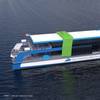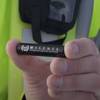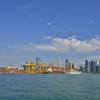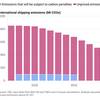DNV Wants Increased Focus on Plastic Degradation
DNV and WWF have announced ideas on how to develop a research concept vessel that can address the seemingly intractable problems associated with cleaning up the plastic debris that is accumulating in the world’s ocean gyres. The pathways and degradation processes of plastic in the ocean are still largely unknown, and to enable efficient clean-up these knowledge gaps need to be filled.
Plastic is estimated to take 10-500 years to degrade in the ocean. By initiating an action plan and developing a design concept for a specialized research vessel, DNV hopes to demonstrate a practical way forward to reduce the problem and to build global support for action.
By 2020, there will be an estimated 230 million tons of plastic in the ocean, most of it from land sources or as a result of marine activities. It has been shown to accumulate in the relatively still waters inside the five large ocean gyres.
While this accumulation may seem to facilitate its collection and removal, the massive scale of the problem and many unknown variables make this an extremely challenging prospect. For example, to skim the surface layer of the five large gyres would take about 80 years using 1,000 ships.
“Like CO2, plastic pollution in the ocean is everyone’s problem,” said Bjørn Haugland, DNV’s Chief Technology and Sustainability Officer. “And like CO2, all the solutions are not clearly visible at present. Innovation is needed.”
DNV and WWF have therefore joined forces and developed a concept design for a new research vessel: the Spindrift. This 85m vessel could support 38 researchers for 90 days at sea and offer them a suite of flexible research platforms to better understand the problem and test out solutions for collecting the debris. The vessel has systems for efficient monitoring of the ocean both from the air and in the water column, and is designed to flexibly handle different collection technology.
The vessel is intended to help answer questions like: At what depths in the water column should clean-up efforts be targeted? What size fractions should be targeted? How can the bycatch of living marine resources be minimized?
“More accurate estimates of the amount of debris are also important if regulatory measures involving both producers and consumers of plastic are to be implemented in the future,” Mr. Haugland said. “DNV encourages governmental, industry and NGO initiatives to curtail the growing volume of plastic entering the ocean, but that’s not enough. Global pollution control initiatives that cross national borders and oceans are needed. Spindrift offers us an excellent platform for cooperation and innovation.”
www.dnv.com/plasticaquatic














